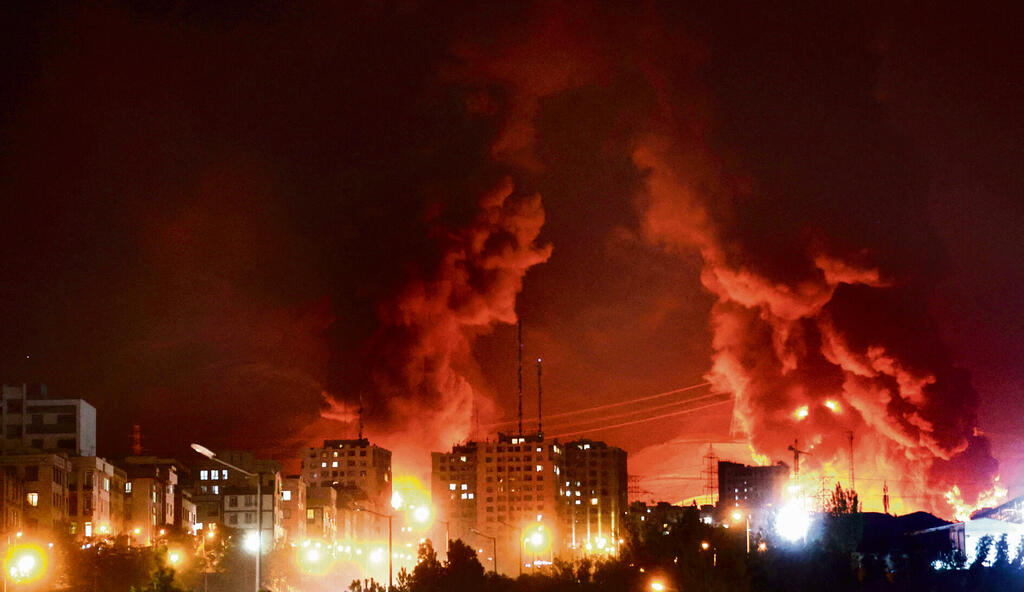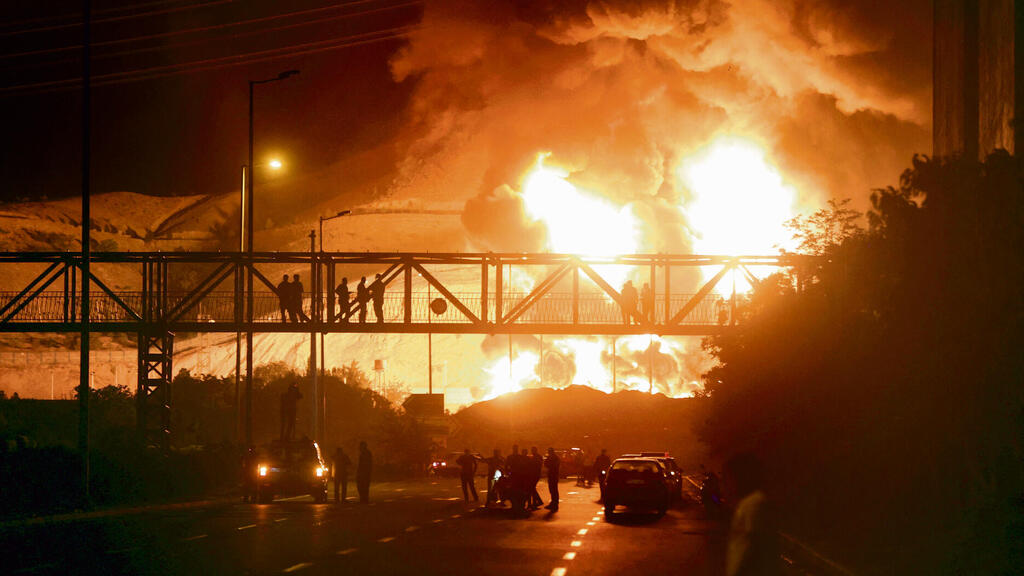Over Tehran, Israeli drones are on the hunt: How the killer drones operate in Iran
These missions aim to neutralize threats and improve the detection of new targets by Israeli aircraft. Remarkably, just over a year ago, these drones were restricted from operating even in Lebanese airspace due to the risk of being shot down by Hezbollah. Now, they are operating deep within Iran’s capital, thousands of kilometers from home.
live
Israeli drones operate in Iran
(Video: IDF)
In the past 24 hours alone, dozens of targets were struck by the Israeli Air Force in Tehran and many were not part of the original intelligence database when Operation Swords of Iron began early Friday morning.
The destruction of hundreds of Iranian radar systems and anti-aircraft batteries has enabled the Israeli military to not only "pave the way to Tehran"—located on the far side of Iran—but also to meet the ambitious directive of Air Force Commander Maj. Gen. Tomer Bar: “Turn the third circle into the first—strike Tehran two to three times a day, not just once a week.”
The latest strike, which reached an Iranian Air Force base 2,300 kilometers from Israel, marks the culmination of a three-phase strategy to secure air superiority in the region:
Neutralizing Hezbollah’s Air Defenses: Over 10 months, Israel systematically dismantled Hezbollah’s advanced anti-aircraft systems, which had previously restricted Israeli air operations over Lebanon.
Disabling Syrian Defenses: Following the collapse of the Assad regime, Israel swiftly eliminated Syria’s dense anti-aircraft network.
Preventing Turkish Interference: Israel successfully lobbied against Turkey’s deployment of air defense systems in northern Syria, avoiding potential friction or intelligence sharing with Iran.
These efforts dismantled a regional radar detection network that could have alerted Iran to Israeli incursions before aircraft even crossed into Syrian or Iraqi airspace.
While the U.S. officially distances itself from Israeli operations in Iran, behind the scenes, CENTCOM provides critical support in intelligence, early warning systems and missile defense. American naval assets are en route to the region, enhancing Israel’s ability to intercept Iranian missile threats.
This cooperation has proven vital. Real-time intelligence allows for 15–20 minutes of advance warning before missile launches. Systems like Iron Dome, David’s Sling and Arrow intercept incoming threats, with each layer providing a unique defense capability.
Israeli officials also credit the Trump administration’s earlier decisions and the recent unfreezing of munitions by the Biden administration for enabling these operations.
“People don’t realize how much the release of U.S. munitions has empowered us,” said one security official. “A quarter-ton bomb that destroys a missile launcher costs far less than an Arrow 3 interceptor.”
To conserve resources, the IAF has adopted a controversial but calculated policy: it does not intercept Iranian missiles projected to land in uninhabited areas. Of approximately 250 launches, several dozen were allowed to fall in open terrain, causing no casualties or property damage.
The operation’s timing is notable, as the Israeli Air Force is still awaiting a long-overdue modernization of its fleet. Many aircraft are outdated, yet the mission’s success is a testament to the dedication of maintenance, technology, and armament crews.
The aging "Ram" refueling aircraft—some in service for nearly 60 years—are critical to maintaining continuous operations over Iran. These tankers enable dozens of Israeli aircraft to remain airborne over hostile territory for extended periods, returning only briefly for maintenance and refueling before redeploying.
Despite extensive joint training with the U.S., Israel insists that no American refueling aircraft are involved in these missions. Recently acquired F-15s have also been deployed, contributing to mission management and stealth operations.

